An Inordinate Fondness for ... Butterflies!
An Inordinate Fondness for ... Butterflies!
"I turned to the teeming small creatures that can be held between the thumb and forefinger: the little things that compose the foundation of our ecosystems, the little things, as I like to say, who run the world." - E.O. Wilson
A few months ago, I went on a hike with my extended family in one of the many wonderful State Parks that dot the state of Texas. By the end of the short, two mile trail, I received the comment - "You know, we are usually through with the trail in half hour or so!" We had taken about four hours to complete the same trail, all thanks to my birding. Just for perspective, a half mile or less stretch took our class of fifteen students more than 3 hours, when the focus shifted to the 'teeming small creatures', on a field trip for our course on Invertebrate Ecology. With that shift in scale, when one stops to look at every little thing that is best seen with a magnifying glass, time shifts in scale too, me thinks.
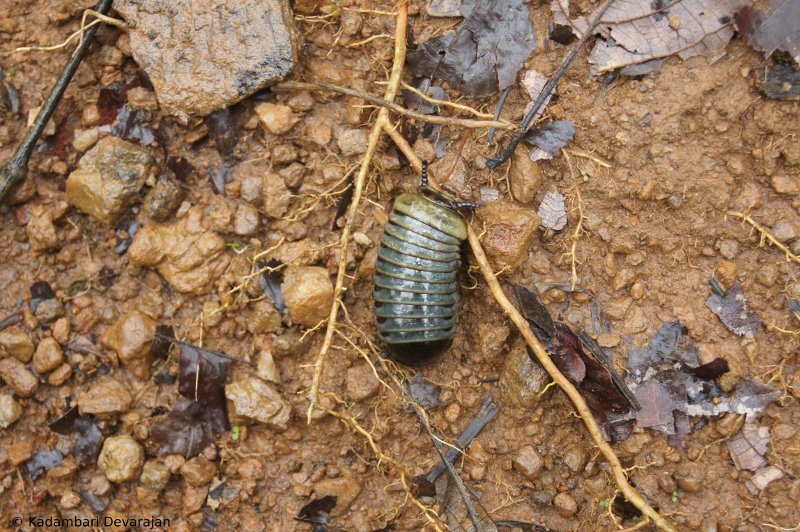
Pill Millipede

Pill Millipede
One of the courses we have as part of our graduate program in Wildlife Biology and Conservation at NCBS is Invertebrate Ecology which is on a trial run as a full-fledged course this semester. It must be said that it has opened our eyes to a whole new world - one with its own denizens and rules. And while our instructor for the course does have an 'inordinate fondness' for butterflies, he does his best to expose us to all invertebrates, great and small. For some people, one of the most exciting things in life is to be outdoors with a thorough-bred naturalist, crawling on all fours at times, wishing one had eyes at the back of ones head, and craning one's neck to listen to the cacophonous natural classroom. The first major field trip for the course was one such experience.
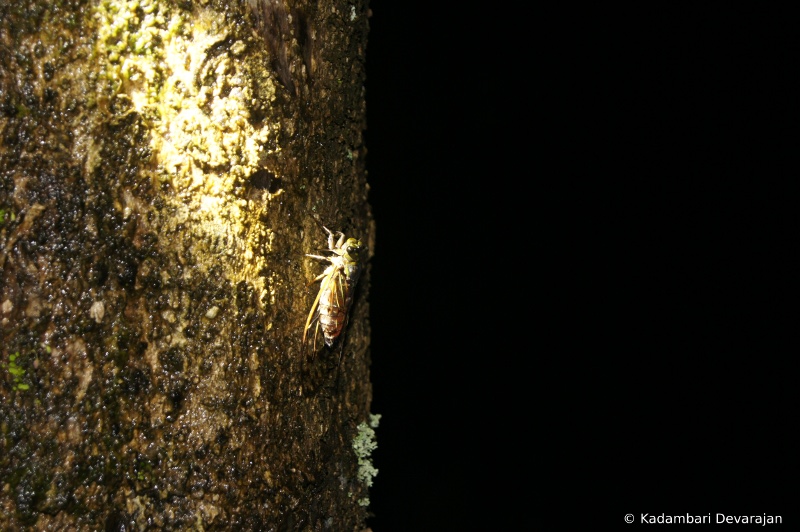
Cicada
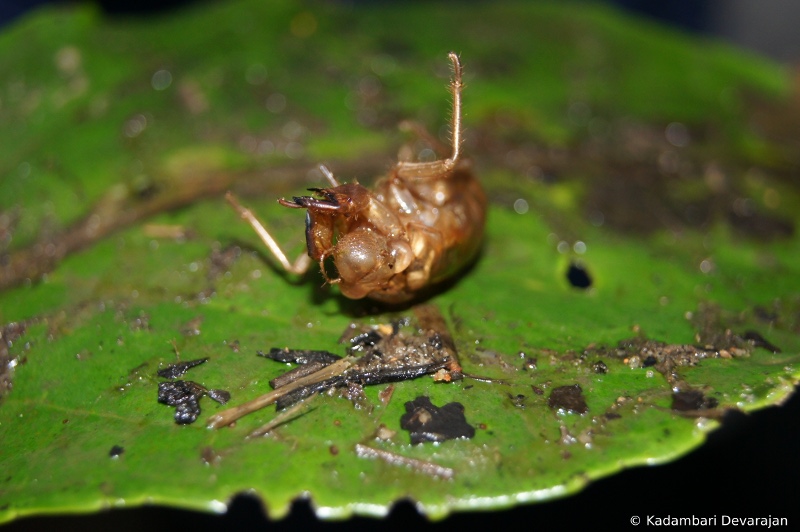
Cicada moult
We were in the lush rainforests of Coorg, that lived upto its name for the duration of our stay. The rain did not deter us one bit, though. And we even took to flitting leeches in all directions from every inch of bare skin possible within hours (even those squeamish few of us) as easily as horses to flies. The leeches were a lesson in invertebrate ecology in some sense, unplanned and unwelcome as they maybe. As someone pointed out, they ARE fascinating creatures. We made the most of every minute outdoors, come rain or shine, with every sense awake and alert. We learned to identify butterflies and moths by sight, cicadas by their call, spiders by their webs, and a plethora of other invertebrates with other tell-tale signs.
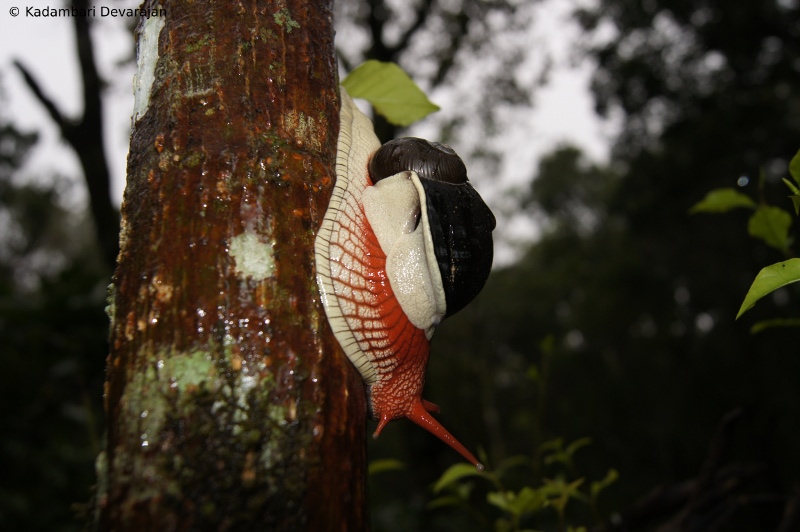
Coorgi Snail (Indrella ampulla)
We would be intercepted by the colorful Indrella ampulla (a large snail species endemic to the Western Ghats), streaks of red in an otherwise green and brown landscape. We were made to recall our classroom lectures on eusociality and coevolution, foraging and predation, survival strategies ranging from crypsis to aposematism and mimicry, mutualism and cooperation ... We remembered learning about dispersal, migration, and courtship in insects. Every step and turn, every leaf and twig offered us a lesson on some aspect of the natural world. We returned to Bangalore a tired but enlightened lot.
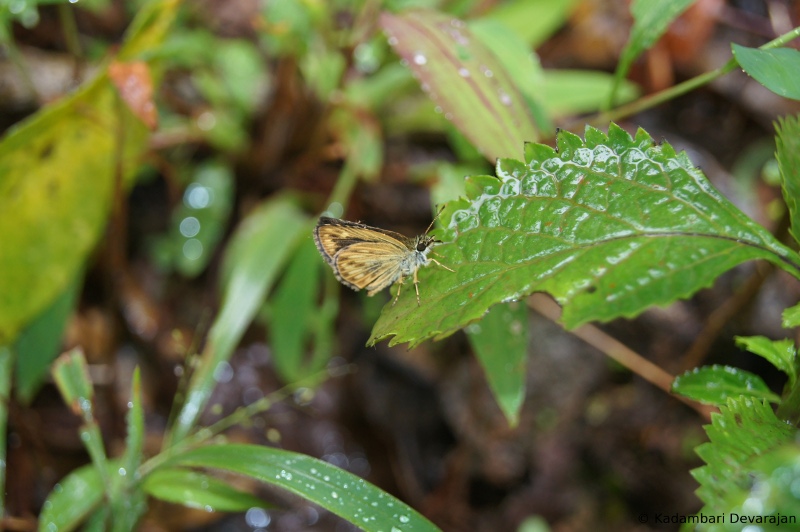
Malabar Hedge Hopper (Baracus hampsoni)
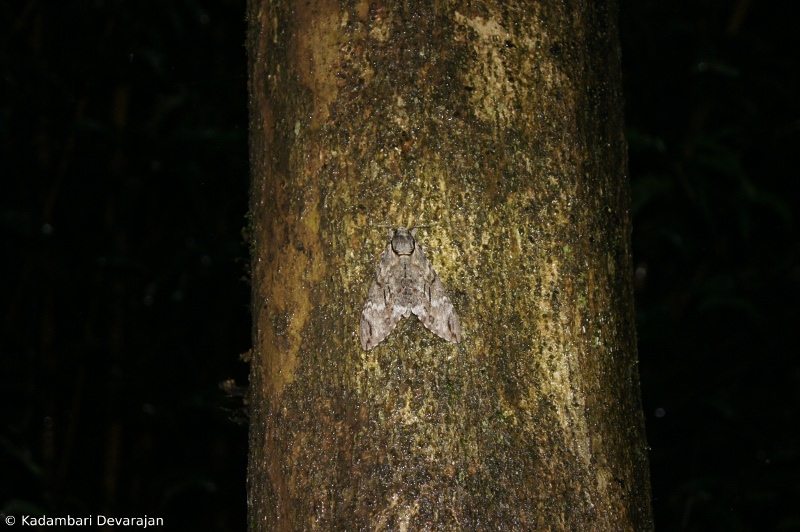
Hawk Moth?

Moth?
Anyone who sees a Paris Peacock (Papilio paris), a species of swallowtail butterfly, would probably notice the aptness in name. A sighting of a Southern Birdwing (Troides minos) would incur a similar response, for it is a giant amongst butterflies. In addition to being endemic to peninsular India, it is the uncrowned king of large butterflies found in southern India. The Blue Mormon (Papilio polymnestor), another of those large and colorful swallowtail butterflies, is another beauty in blue. The Red Helen (Papilio helenus) may not be in the same league as the former, but is said to be gorgeous in its larval stage and has amongst its virtues the looks of 'shiny bird dropping' after the caterpillar's first moult! We could also see numerous of those 'warblers of the Lepidopterans', the Satyrids or Browns - from the White-bar Bushbrown (Mycalesis anaxias) to the Dark Evening Brown (Melanitis phedima) and the Gladeye Bushbrown (Mycalesis patnia). One can cover the entire color spectrum (and shades therein) many times over in a single day watching butterflies. The case in point - the Rustic (Cupha erymanthis), Redspot Duke (Dophla evelina), Three-spot Grass Yellow (Eurema blanda), Common Fivering (Ypthima baldus), Malabar Hedge Hopper (Baracus hampsoni), and Common Castor (Ariadne merione) were all seen in a matter of minutes. And butterflies apart, we saw spiders, beetles, preying mantises, grasshoppers, dragonflies, slugs, cicadas, and invertebrates of all shapes, sizes, and color. Anyone who thinks that insects are drab and dull is sadly mistaken, or as our instructor so eloquently put it (in the context of 'nuptial gifts' in insects) - "They are so crazy that they are cool"!
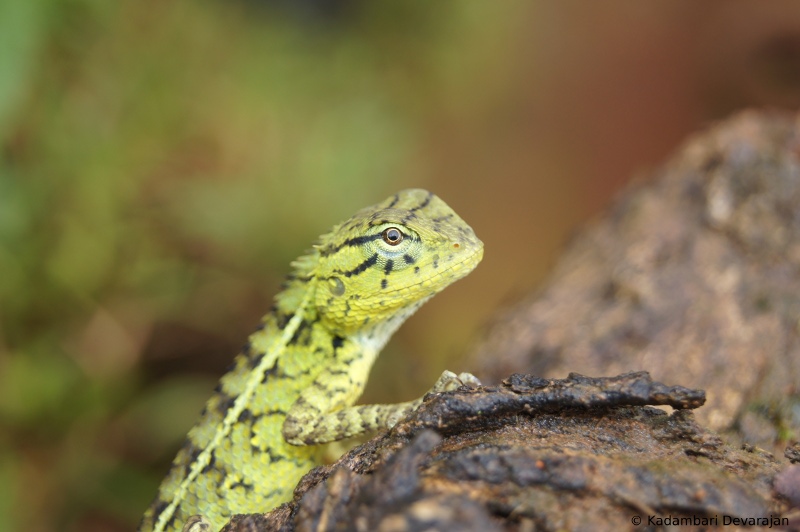
Common Green Forest Lizard (Calotes calotes)
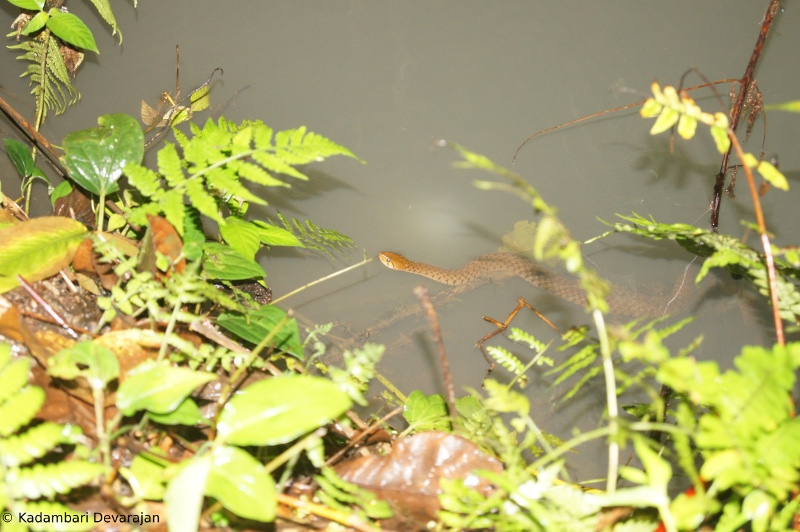
Checkered Keelback (Xenochrophis piscator)

The Rainforest Retreat
We stayed at the Rainforest Retreat at Mojo Plantation in Kodagu, nestled in between 'shola' or low altitude evergreen forests, interspersed with small patches of grassland and streams. The ideas of agro-forestry, organic farming, and sustainability seemed to form the bedrock of the plantation. Our hosts for the duration of the trip were ardent naturalists themselves and spoke to us about the conservation of biodiversity in such landscapes. The eco-lodge was ideal as a base for our explorations, especially given the unusual ecosystem it was situated in. One of the pet projects of our hosts was a study on insect biodiversity of organic plantations, as opposed to plantations in the regions that used NPK, and those that used both NPK and fertilizers.
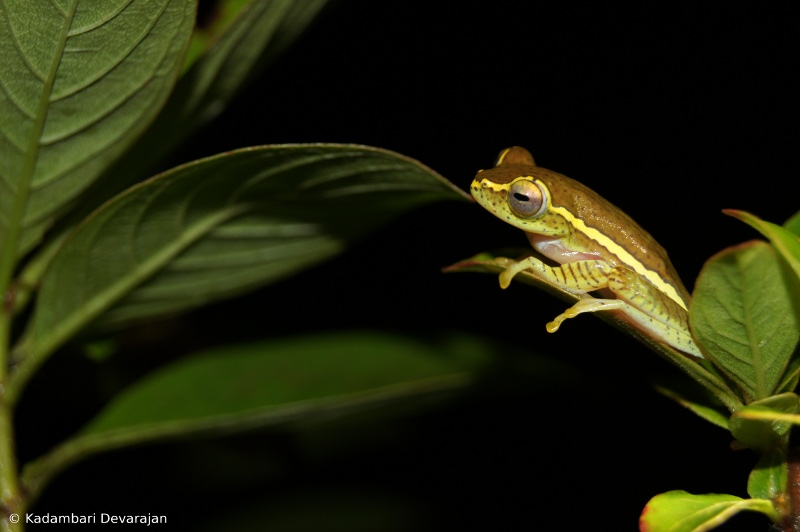
Boulenger's Gliding Frog (Rhacophorus lateralis)
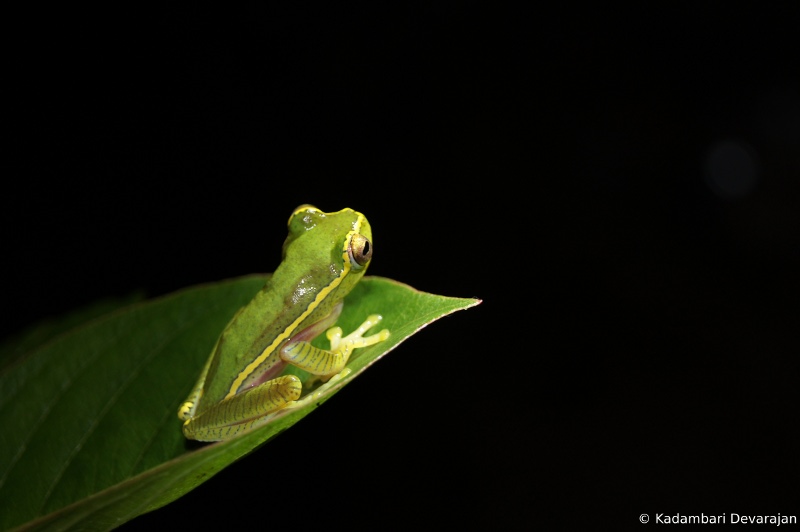
Boulenger's Gliding Frog (Rhacophorus lateralis)
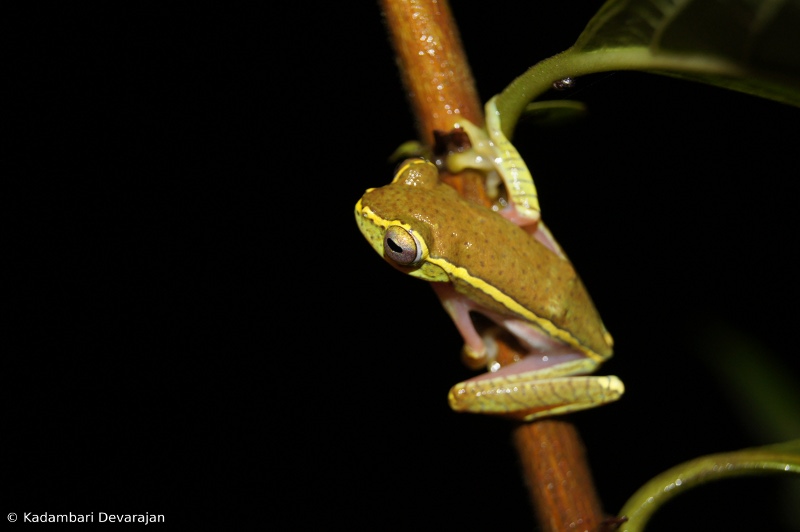
Boulenger's Gliding Frog (Rhacophorus lateralis)
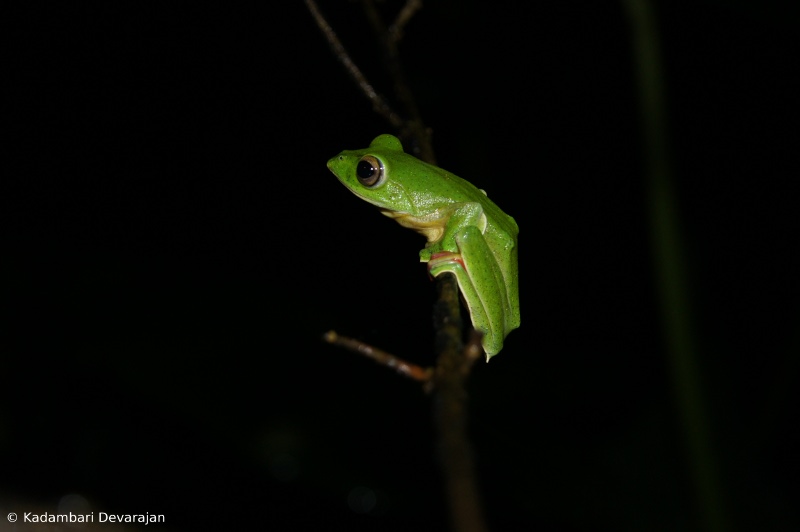
Malabar Gliding Frog (Rhacophorus malabaricus)
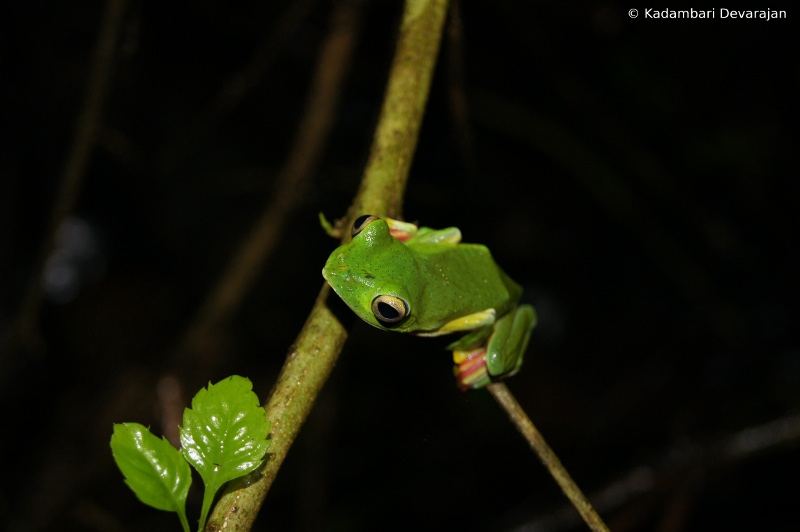
Malabar Gliding Frog (Rhacophorus malabaricus)
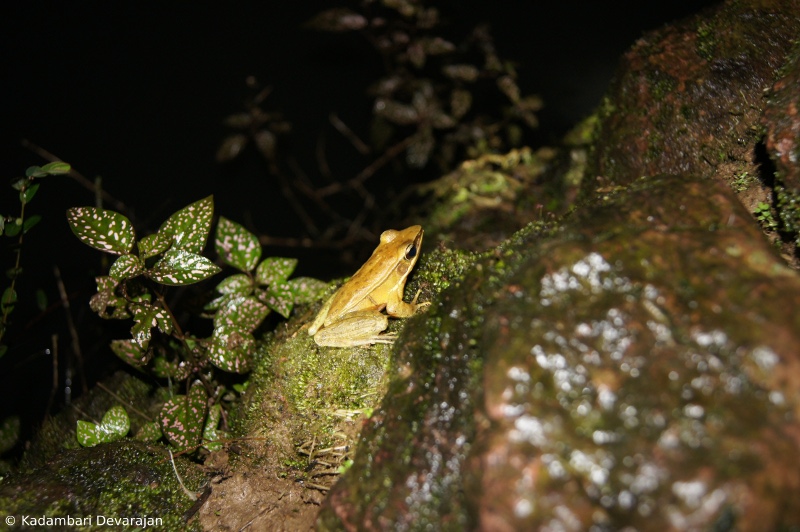
Bronze Frog (Hylarana temporalis)
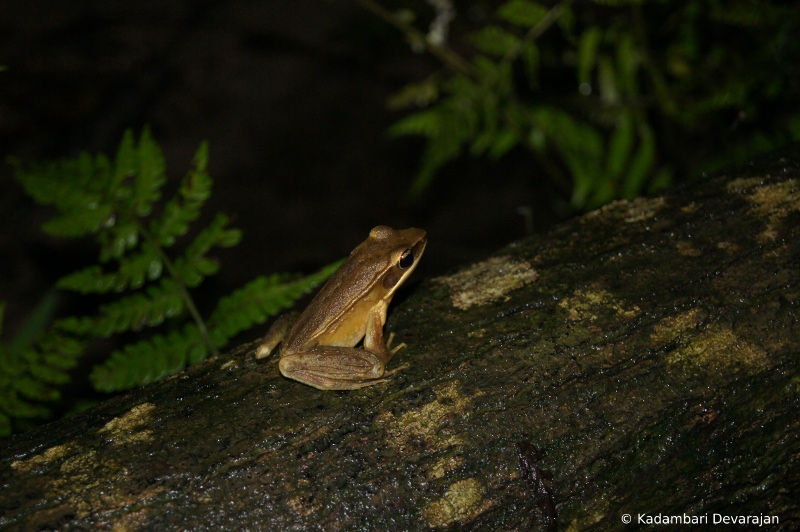
Bronze Frog (Hylarana temporalis)

Bicolored Frog (Clinotarsus curtipes)
The plantation was a hotbed of biodiversity and a wonderful assortment of reptiles, mammals, birds, amphibians, and flora could be found here, in addition to the numerous invertebrates. Some of us were excited by endangered amphibians (we managed to see the Malabar Gliding Tree-frog, Rhacophorus malabaricus, as well as R. lateralis), while others expectantly went on a midnight quest for civets but returned disappointed. As for me, I was thrilled when the trip threw up an unexpected 'lifer' in the flame-throated bulbul (Pycnonotus melanicterus gularis), in addition to a cornucopia of invertebrates. In all, this trip turned out to be not just about invertebrate biology, but also taught us about all the complex interactions that drive conservation biology and ecology.